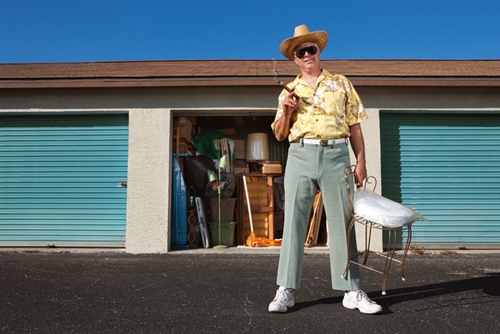When you store household items you can’t go wrong with a cool, dry environment maintained at a constant temperature. These conditions are in short supply in the storage spaces you might have at home. Think how hot your attic feels on a warm day, and how cold it is in winter. Sheds and garages suffer from the same problem.
Why is a stable storage environment important?
Fluctuating temperatures can damage precious items
The UK weather changes rapidly, causing sudden changes in temperature. As the air temperature changes so too does the temperature of your stored goods. Different materials expand and contract at different rates according to temperature and this can cause damage to precious or sensitive items. Antique furniture is particularly susceptible to this and should be stored with care and consideration.
A stable storage environment reduces damp
Changes in temperature can also encourage condensation, as cooling air drops its load of moisture. This can make your items damp, particularly if the space is poorly ventilated. Damp can promote the growth of mould, and it can make items smell musty. Suede clothing, fur and leather footwear and bags are particularly susceptible to damp and need to be kept in a dry, dark stable environment.
Climate control reduces dust
Storage units with climate control usually have to be sealed. This makes it harder for dust to get into the building. If your goods get dusty in storage, then you’ll have to clean them off when you bring them out, which is inconvenient, particularly if dust sets your allergies off. The cleaner air of climate-controlled storage units is beneficial if you are storing electronic items.
Climate control reduces the chances of pest infestation
As mentioned above, climate-controlled storage units are closed off from the outside world. This means that there is less chance of an invasion by pests such as moth.
Which domestic items definitely need climate-controlled storage?
- antique furniture and collectables
- AV equipment
- clothing and shoes
- musical instruments
- paintings
- paper documents and books
- photographs and film
- vinyl records (see our blogpost) and tapes (and the equipment needed to play them)
- white goods
The Victoria and Albert has articles on the correct way to care for various antique possessions.
Which items do not need climate-controlled storage?
Not every item needs climate-controlled storage, of course. Crockery will not come to harm in a chilly shed, for example.
How much does climate-controlled storage cost?
Climate-controlled storage will be more expensive. So, it’s worth placing the monthly cost against the cost of replacing items that are sensitive to environmental conditions. And some items can never be replaced if they get harmed by an unstable storage environment: family heirlooms, documents and photographic prints for example.
But if you are storing items for a longer period – say a year, during which the temperature will fluctuate between summer and winter conditions – consider whether climate-controlled storage is what you need. There is, of course, no time limit on how long you can rent a storage unit for, and as part of your self-storage admin you should review whether your chosen self-storage site still meets your needs.
At the end of the day, climate-controlled storage should give you peace of mind, and you can back that up with a good storage insurance policy. Get a quote today from Store and Insure.


